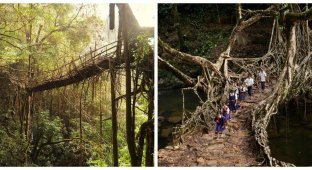In India, bridges are not built, but grown (7 photos)
In a village near a forest and in the Indian jungle itself there are not many stones and metals to build bridges. And what is there in abundance? Plants. And here is how the indigenous Indian Khasi population has brilliantly adapted to build from what they have at hand. 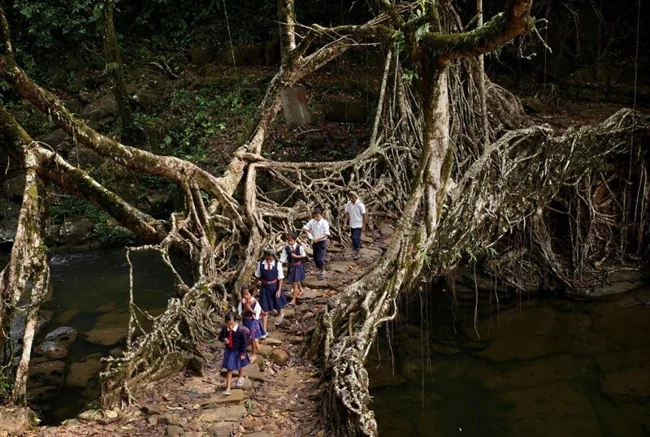
The Khasi live in the tropical forests of Meghalaya in northeastern India. It is incredibly humid there, any plant grows right before your eyes. This architectural practice took root in Meghalaya because it receives 12,000 mm of rainfall annually. Rain falls from June to September during the monsoon season. 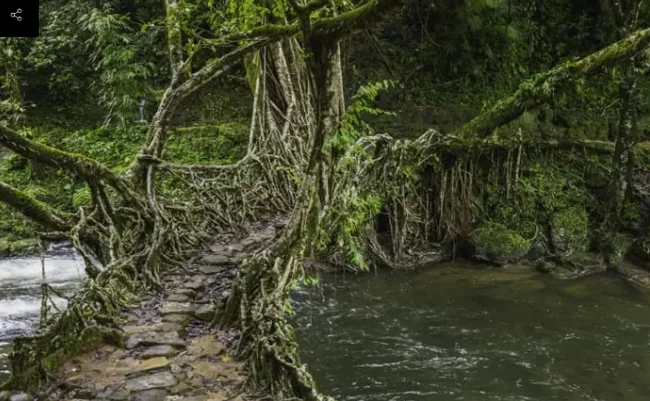
This is an old bridge, paved with pebbles, but it is alive!
The forests at this time are penetrated by turbulent rivers, which carry monsoon waters with such force that nothing can withstand them. Such an abundance of water can easily kill a person, but the indigenous people have learned to use it to their advantage and not get caught. They simply walk along the upper tier of the forest, but not like monkeys - jumping from branch to branch. 
It was not the wondrous forest elves and fairies who built these, but ordinary Indians
They used to build bamboo bridges, because it is the simplest and lightest material that can be found in the forest. But due to the humidity, such bridges quickly rotted, and the water quickly carried away their debris. The reliability of such a structure could not be trusted.
They had to look for other materials.
Everything ingenious is... ingenious 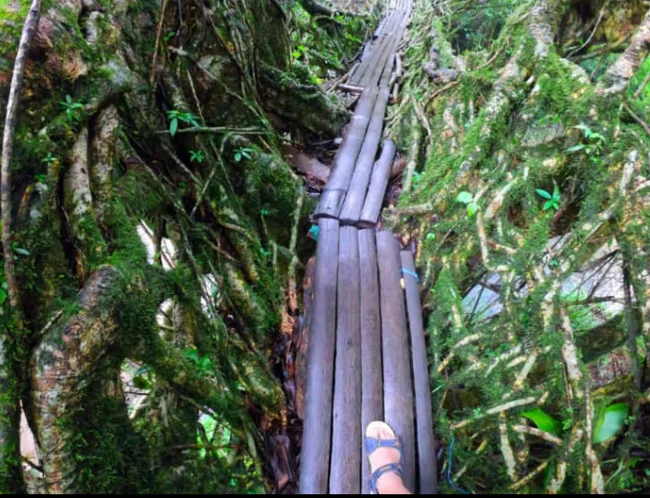
To prevent the foot from falling through, they then lay bamboo
Then the Khasi tribe noticed the countless tree roots that were sticking out of the soil washed away by the fast-flowing streams. The elders began bending and lifting them, mainly the roots of rubber trees, to intertwine them with the roots of the neighboring tree at the height of a standing person.
Years of care and shaping finally brought the roots together to form the basic structure of the bridge. Over the years, as the roots continue to grow, the bridge structure becomes strong enough to support the weight of people. 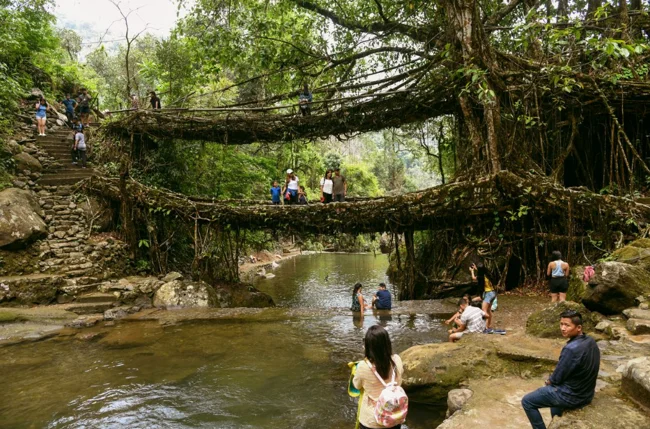
There are 72 of these bridges in this village in the forest! You don't even have to step on the ground!
The idea was born about 200 years ago, and people continue to build structures to make life easier in watery lands.
The Indian banyan tree, also known as the rubber tree, grows abundantly on the banks of rivers, extending its roots to the water streams to drink. It takes 15 to 20 years for the tree's roots to tame into a bridge. But their main advantage is that they almost never require maintenance. And they don't rot like cut bamboo, they are alive! 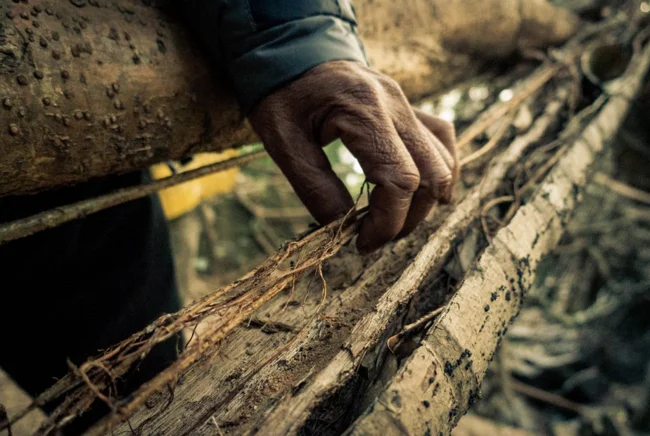
Locals can tell living and dead roots by the texture of their fingertips
When locals have money, they buy steel cables and other modern materials to lay new paths. But the tribes of India are not so rich, especially those from the jungle, so everyone here looks after the new root bridges that are just forming and "lays" new ones. 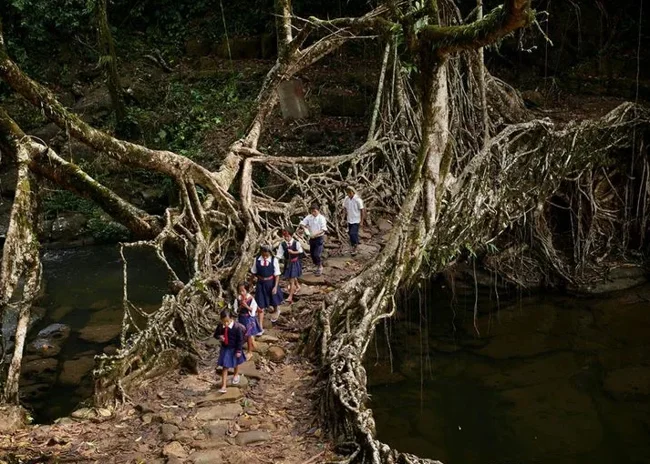
Schoolchildren walk home to their village on such a bridge
And until they all are replaced with cables and purchased plastic, one can only admire that this is not a fantasy - this is a real place where people live in India.












